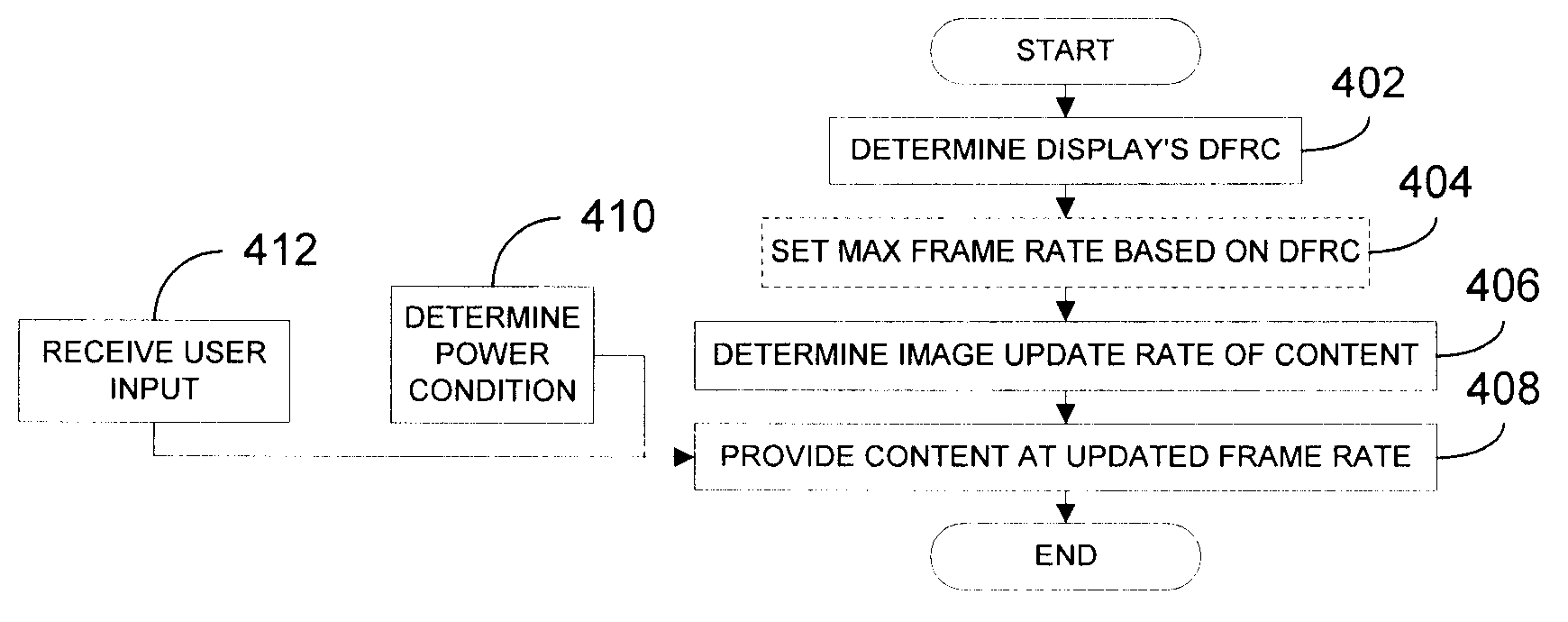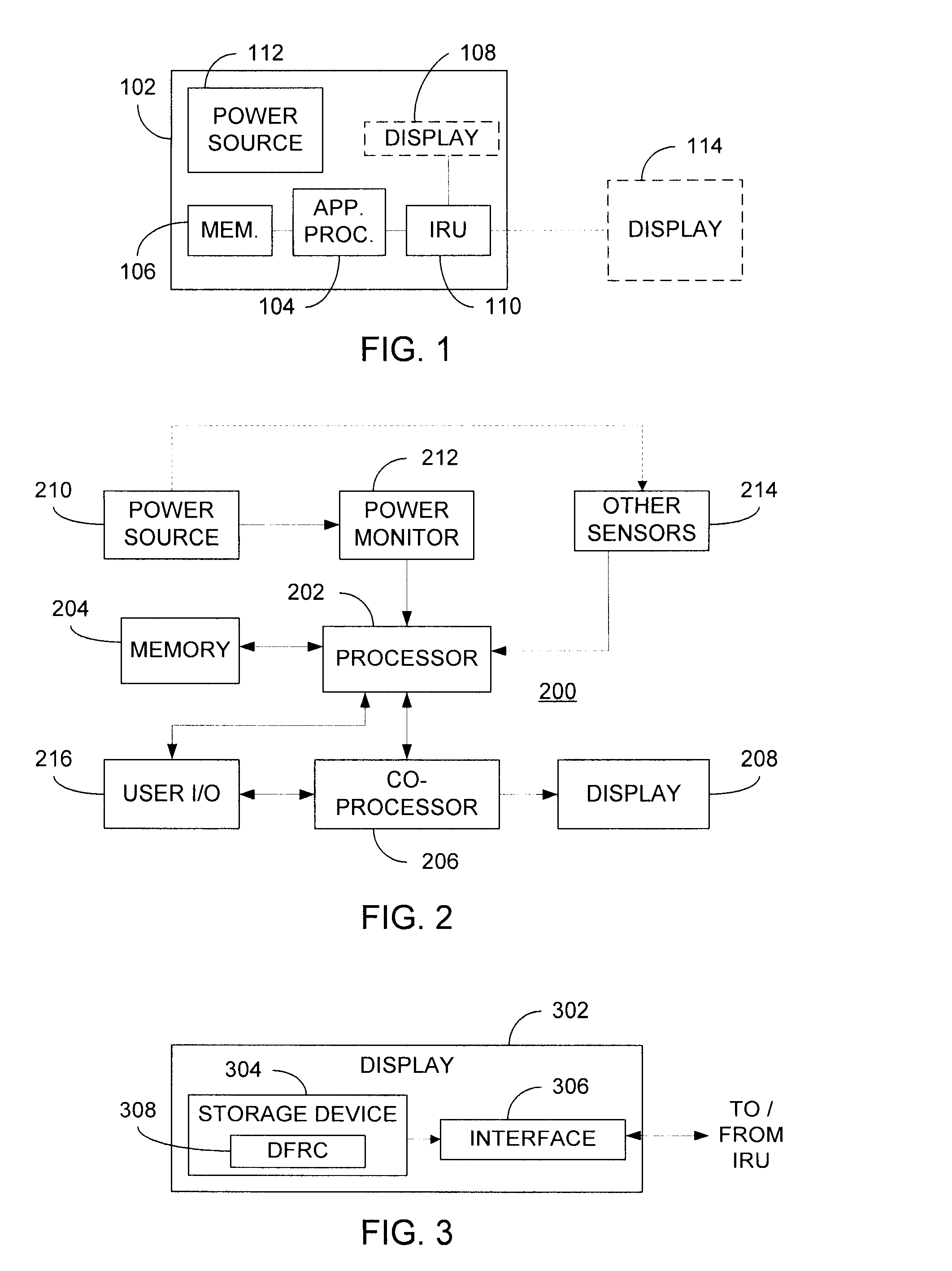Dynamic frame rate adjustment
a dynamic frame rate and adjustment technology, applied in the field of dynamic frame rate adjustment, can solve the problems of display power consumption, display refresh rate changes that cannot be gracefully supported, and display corruption,
- Summary
- Abstract
- Description
- Claims
- Application Information
AI Technical Summary
Problems solved by technology
Method used
Image
Examples
Embodiment Construction
[0017]Briefly, the present invention provides a technique for dynamically adjusting frame rate of a display based at least in part upon the image rate of content to be displayed thereon. Where a given display, which may be integral with or external to a device, possesses dynamic frame rate capabilities, an image rendering unit (IRU) of the device can determine the dynamic frame rate capabilities (DFRCs) of the display and additionally determine an image frame rate of content to be displayed. The DFRCs can be pre-stored in memory associated with or otherwise available to the IRU, including storage devices that may be deployed within the display itself. Based on the DFRCs and the image frame rate for the content, the IRU determines an updated frame rate and thereafter provides the content to the display at the updated frame rate. Where control of power consumption is desired, a maximum frame rate of the display can be set as the initial frame rate although, of course, other frame rate...
PUM
 Login to View More
Login to View More Abstract
Description
Claims
Application Information
 Login to View More
Login to View More - R&D
- Intellectual Property
- Life Sciences
- Materials
- Tech Scout
- Unparalleled Data Quality
- Higher Quality Content
- 60% Fewer Hallucinations
Browse by: Latest US Patents, China's latest patents, Technical Efficacy Thesaurus, Application Domain, Technology Topic, Popular Technical Reports.
© 2025 PatSnap. All rights reserved.Legal|Privacy policy|Modern Slavery Act Transparency Statement|Sitemap|About US| Contact US: help@patsnap.com



